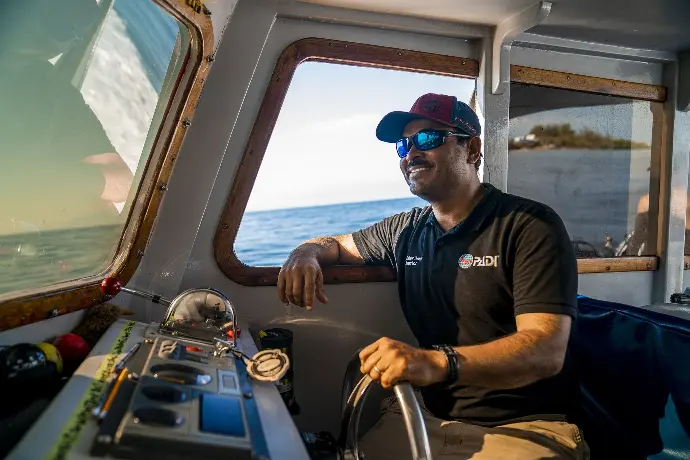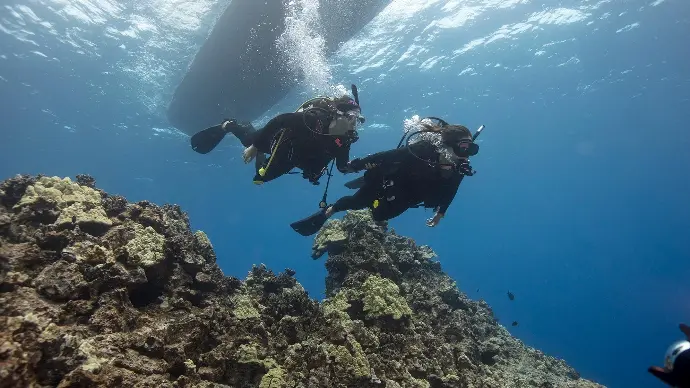WHAT YOU NEED TO KNOW ABOUT PADI IE
INSTRUCTOR EXAMINATION
Span across 2 Days
2 Exams Multiple Choices
5 Skills Pool Demonstrations
1 Rescue ExerciseDemonstration
1 Knowledge Development Presentation
1 Confined Water Evaluation
2 Open Water Evaluation
WHAT TO EXPECT ON YOUR IE
HELLO FUTURE INSTRUCTORS!
WHAT WE EXPECT FROM YOU
- PADI Instructor Manual (Paper or digital version)
- PADI Guide to Teaching
- eRDPML, RDP Table, Calculator
- Personal diving equipment - As detailed in PADI GS&P
-
Diving Medical (dated with past 12 months, signed by physician)
WHAT IS EXPECT FROM PADI IE
-
PADI will provide the IE details five days prior to the scheduled date
-
Briefing about IE activities
-
Support with language difficulties
- With such a packed schedule, every minute counts
The IDC is divided into five sections:
Classroom Exams
1- Dive Theory
- Physics
- General Skills & Environment
- RDP – Recreational Dive Planner
- Physiology
- Equipment
2- PADI Standards & Procedures
Classroom Presentations
- Present 1 Knowledge Development Teaching Presentation
Pool/Confined Water Teaching Presentations
- Confined Water Presentations (1 random skills)
- Confined Water Skills (5 random skills)
Open Water Presentations
- Open Water Teaching Presentation (2 random skills)
- Rescue Exercise 7 Demonstration
Closing & Certification
Concluding the 2-day events with a certification ceremony for those who pass the IE. In case of not passing one or more sections, there is no need to worry as you will either have the opportunity for a makeup session during the same IE (subject to PADI's approval) or you can complete it at the next IE in your region. additional IE fees may apply.
If you fail at your first attempt at the IE you will be permitted to take a second IE. Your second IE is not allowed to be taken within 5 days of the first and if you wait longer than 1 year after the first one you will need to either take a full IDC again or apply to PADI.
If you are resitting one or two segments of the IE, the examiner will need the following:
- The Certificate of Participation from your previous IE.
- Completed IE Enrolment form with payment details attached. The cost is made per segment payable by cheque, credit card or bank draft to the PADI Examiner at the IE. All cheques or bank drafts should be made payable to PADI. Please note it is our policy not to accept cash or EFTPOS.
- If you are resitting either the confined or open water portion of the IE, a copy of an approved medical form. This form must be signed by a physician indicating that you have been examined and declared unconditionally fit to dive within 12 months of the IE’s final day.
If this is your 3rd IE, you are required to provide your 3rd IE remediation document, signed off by a valid PADI Course Director.
The confined water portion of the IE will be held at a local pool / confined water area. All cylinders should have boots to minimise risk of damage to pool surrounds otherwise access may be denied.
The open water site for the IE will be announced at the Orientation.
RESCUE – UNRESPONSIVE DIVER AT THE SURFACE You will have a 50/50 Chance of doing this with a rescue mask so practise both.
- APPROACH Splash water to try to get divers attention. Shout ‘Diver, diver – I am a rescue diver, are you okay?
- SHAKE VICTIM Ask if okay.
- TURN OVER VICTIM Crossover arm turn.
- CALL FOR HELP Shout ‘Help, help – I have an unconscious diver, call for EMS.
- ESTABLISH BUOYANCY Inflate the victims BCD - Inflate your BCD - Remove the victims weight belt - Remove your weight belt.
- POSITION YOURSELF Position yourself on one side of the victim, at their shoulder, so that your head is near the victim’s head.
- REMOVE REGULATOR Remove the victims regulator.
- REMOVE MASK Remove the victims mask Remove your own mask.
- OPEN AIRWAY Head tilt, chin lift method. A-Look for chest rising and falling 10 seconds (count aloud). B-Listen for breathing or coughing. C-Feel for breathe.
- 2 RESCUE BREATHS Perform 2 slow rescue breaths – remembering to pinch the victims nose.
- CALL FOR HELP Shout ‘Help, help – I have an unconscious diver, call for EMS’ You can do this anytime before this.
- COUNT 5 SECONDS 1 one thousand, 2 one thousand… (Flick any excess water from your hand at 4 one thousand).
- 1 RESCUE BREATH Perform 1 breath.
- CONTINUE RESUSCITATION Continuously repeat the cycle of the above 2 key-points.
- EQUIPMENT REMOVAL Remove victims BCD This should be carried out between performing resuscitation.
Want to discover more?
Contact us to book your IDC Course.



